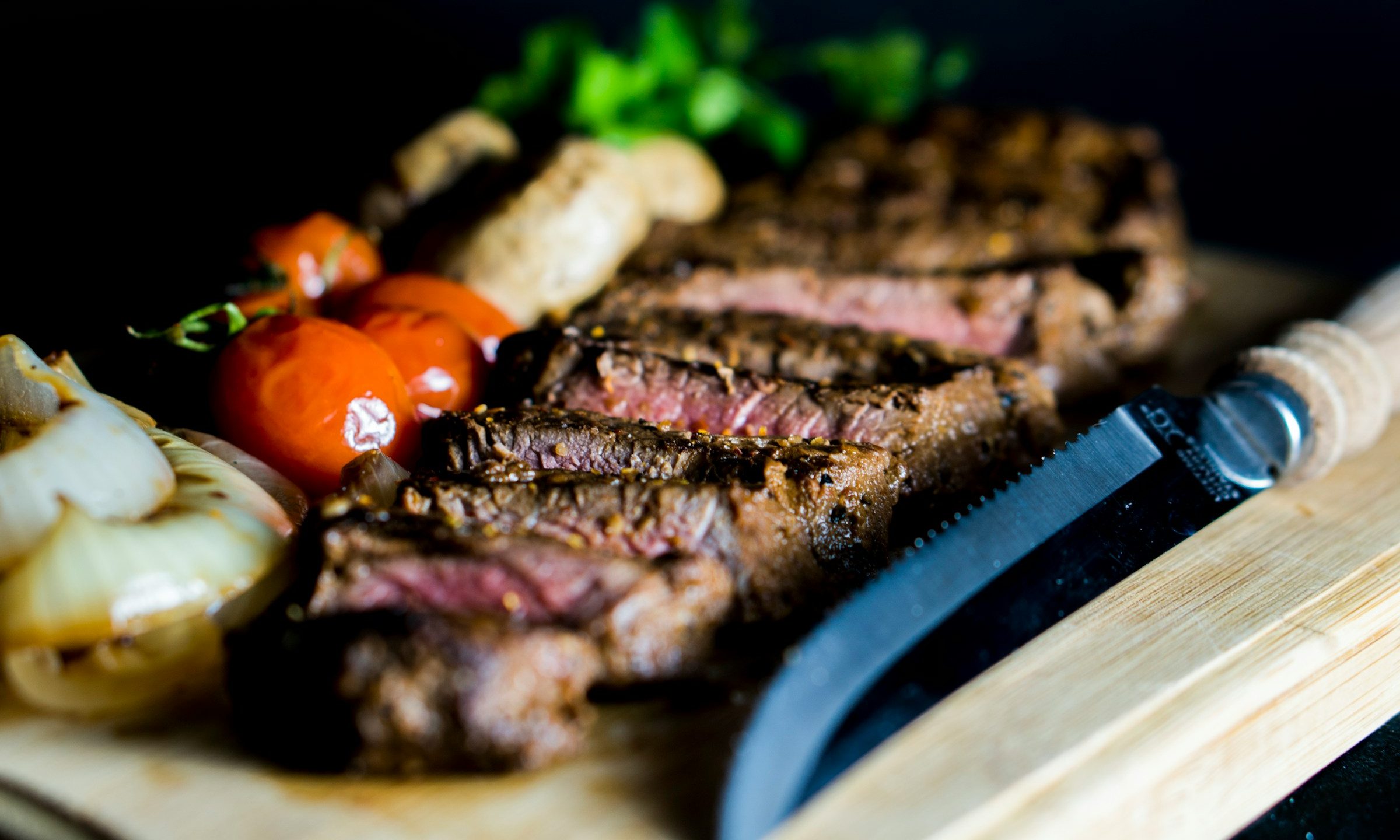Every summer, as grills are brought out from the garage, meat tongs are pulled from drawers, and deck refrigerators are stocked with delicious brewskies, there is a question I never cease to hear from friends and family – what’s the difference between flank steak and skirt steak? It’s an understandable question, to be sure. Both are meaty, deliciously juicy, thin cuts of steak. Both are sinfully savory in their quick-cooking, charred summertime glory. Both are surprisingly affordable when compared to other popular cuts like ribeyes and filets. And both are, well, pretty weird-looking. Hell, you can even swap one for the other in most recipes. So, what’s the difference between these two similar, popular cuts of beef?
What is flank steak?

What is skirt steak?

Skirt steak, on the other hand, comes from the belly section of the cow below the rib. It is a long, thin, ribbon-shaped cut with visible muscle fibers that resemble the pleat of a skirt, giving this delicious cut its apropos name. There are technically two skirt steaks that come from the cow—the outside and the inside. The outside skirt is slightly thicker and a bit more tender than the inside and is usually reserved by restaurant kitchens, making the inside skirt far more commonly found in grocery stores.
Weighing on average of about a pound and a half, skirt steak is generally only about a 1/2 inch thick. Because it comes from a part of the animal that gets a lot of exercise, skirt is both lean and extremely flavorful but tough when not properly cooked. Just like flank steak, this otherwise muscle-y cut will become beautifully tender and delicious with nothing more than a great marinade.
How to cook both

Even with their differences, flank steak and skirt steak are usually interchangeable in most recipes and should be cooked similarly with a few tweaks depending on which cut you’re using. Both steaks have great amounts of surface area for searing and developing a good char, both are thin and cook quite quickly, and both benefit from a delicious marinade to both tenderize and flavor your dish.
When cooking either flank steak or skirt steak, there are a few things to consider to ensure the best possible steak for your dish:
- Marinade: Both flank and skirt steak are relatively tough pieces of meat, but a swim in a good marinade can completely transform that toughness into tender perfection. Good marinades consist of three elements – oil, acid, and flavoring agents. Within these guidelines, feel free to let your inner chef shine and be creative with your ingredients. Things like hot peppers will add some lovely heat to your steak, while fresh herbs will bring some great herbaceousness. Consider the dish you’re cooking, and choose your marinade ingredients accordingly.
- Cooking time: While both of these cuts are quite thin compared to other steaks, flank steak is the thicker of the two and should, therefore, be cooked longer. The best cooking technique for both of these steaks should be high, fast heat, either on the stove or on the grill. Flank steak will take a bit longer to cook than a skirt, but it will still cook quite quickly, so pay close attention while your steak is on the heat that you don’t overcook. It can happen fast! Overcooked steak is always a crime, no matter the cut, but it’s an especially egregious sin when done to flank or skirt steak. If you’re nervous about the temperature, there’s no shame in using a meat thermometer. For a perfectly medium rare cook, you’ll want to pull your steak from the heat when it reaches no higher than 130F.
- Resting and slicing: Because of their thinness, flank and skirt steaks don’t require especially long resting times, but it is still a crucial step in ensuring maximum juiciness and flavor. You should rest your steak for about as long as you cooked it, which should only be a few minutes for both flank and skirt. When it comes time to slice your steak, always be sure to slice it against the grain, keeping in mind that the grain runs opposite ways on these two steaks. For flank steak, you’ll want to slice across its narrow end. When slicing skirt, however, due to its awkward shape, you’ll want to first cut it into a few shorter pieces with the grain, then give it a turn and slice across the grain.




